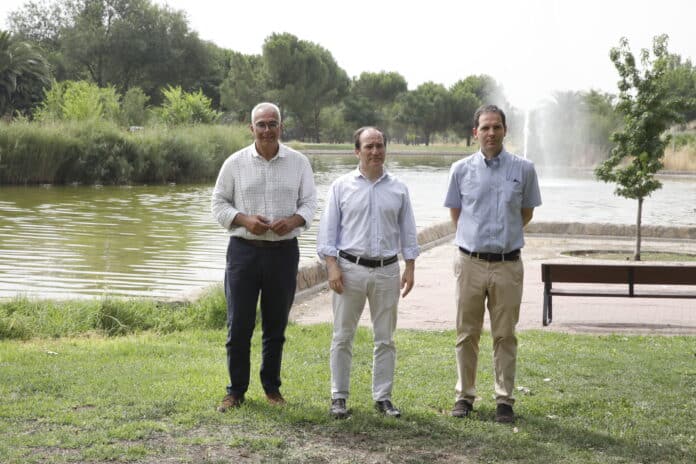The Madrid City Council consolidates its commitment to the environment through various actions aimed at promoting urban biodiversity, demonstrating tangible progress toward a more sustainable and ecological city. As part of the Biodiversity Promotion and Management Plan, since 2022, 48 strategic interventions in parks and green spaces have been implemented, resulting in the planting of 1,147 new trees and more than 11,400 shrubs.
Led by the Department of Urban Planning, Environment and Mobility under the direction of Borja Carabante, these initiatives seek to restore ecological balance, mitigate the impact of climate change, and improve the environmental health of the capital. During a recent visit to Empress Maria of Austria Park, Carabante and the Carabanchel councilor, Carlos Izquierdo, verified firsthand the progress achieved and highlighted the importance of reconnecting with nature in the heart of the city.
The park in question has served as the setting for a pilot project focused on biodiversity, which transformed a degraded islet of 700 square meters into an ecological refuge. The actions included the installation of a biodiversity wall, the planting of species beneficial to pollinators, the creation of ponds, and the promotion of an ideal habitat for diverse species of fauna and flora.
Thanks to the success of this pilot, similar measures have been replicated in other areas of the city, aligning with the sustainable criteria defined in the City Council's strategic plan. These measures include the creation of native meadows, the improvement of tree cover, the transformation of waterlogged areas into seasonal habitats, and the installation of nest boxes.
The favorable impact is reflected in figures: 204 individuals of birds from 26 species, 36 butterflies from eight distinct varieties, and a notable presence of pollinators have been recorded in the Empress Maria of Austria Park. These results demonstrate the success of the implemented strategies and their contribution to the increase in local biodiversity.
In addition to the plantations, the City Council has expanded its ecological effort with green structures such as butterfly houses, ponds, and dry stone walls, which not only beautify the surroundings but also provide essential habitats for wildlife, promoting urban ecological balance.
This green infrastructure aims to attract pollinators, facilitate the colonization of beneficial fauna, and restore natural green corridors, in addition to improving urban comfort by regulating temperatures and increasing air quality. These actions are part of a strategy that connects diverse natural spaces, creating an ecological network that ensures the movement of species and natural regeneration within the city.
By integrating these initiatives, Madrid is moving toward a more conscious and balanced urban development, demonstrating that coexistence with nature strengthens the livability and health of its urban environments. Ultimately, the City Council's commitment makes Madrid a more prepared city to face the challenges of the future.



